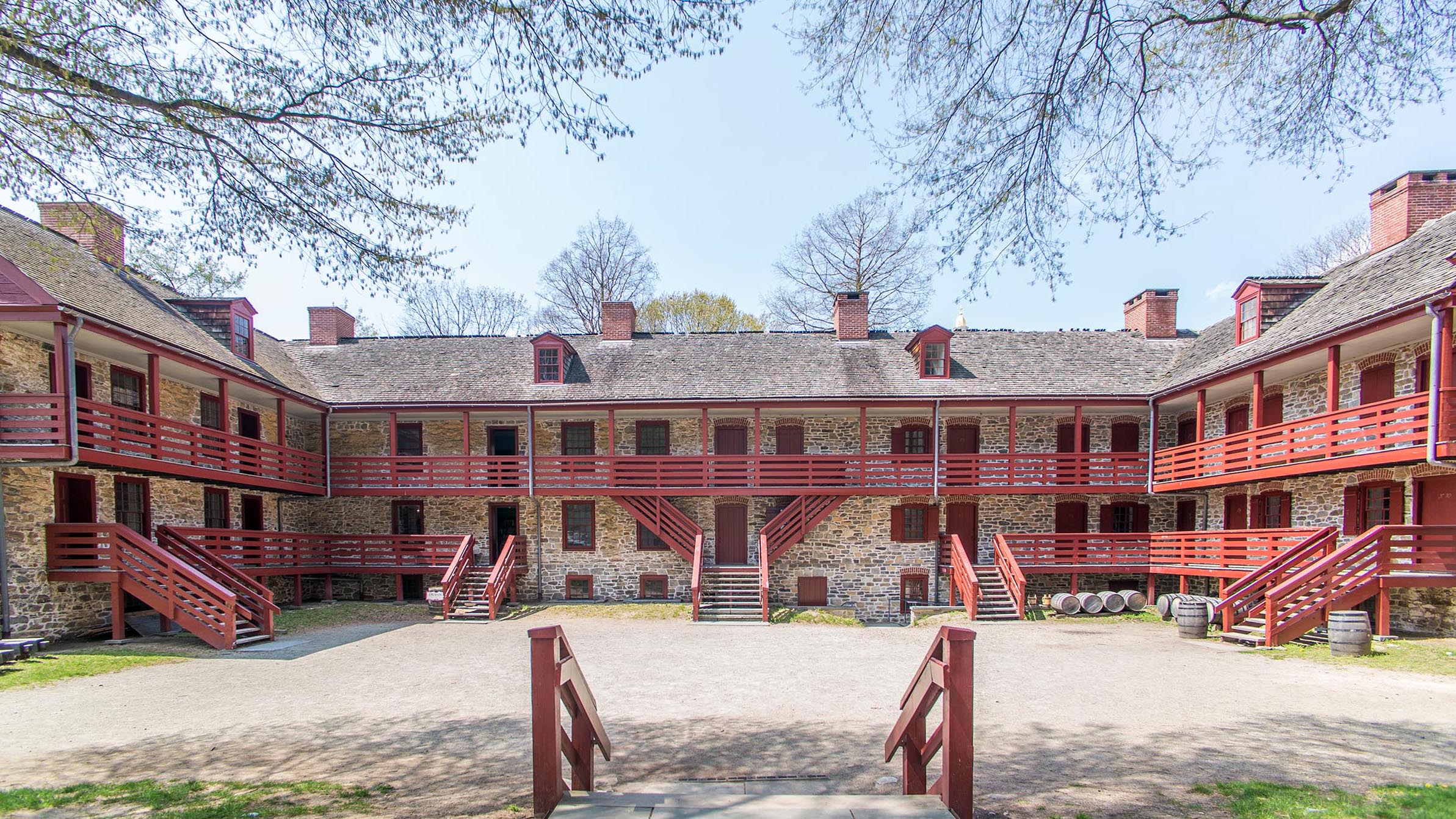
Photo of The Old Barracks Museum by William M. Brown
Upon defeating the Hessians in the First Battle of Trenton on December 26, 1776, General George Washington immediately faced a critical decision: what to do with his new captives.
The Continental Army had captured not just the roughly 900 Hessian officers and soldiers who surrendered, but also their wives and children.
“The Hessians, like any 18th-century army, had camp followers. They appeared to be living in the Old Barracks,” explains William “Larry” Kidder, author of Crossroads of the Revolution: Trenton 1774-1783, which the park’s book club will begin reading in July 2021.
Washington’s original hope, Kidder says, was to transfer everyone to Pennsylvania from Trenton via ferry, but the ice-choked river made that impossible. Instead, the Continental Army marched everyone – soldiers and their families – back to Johnson’s Ferry (now in Washington Crossing State Park in Titusville, NJ) and crossed there. The journey dragged well into the next morning.
About 40 to 50 Hessian officers and soldiers were left in Trenton because they were too sick or badly injured to make the trip, according to Kidder. “Washington put them on ‘parole,’ meaning he made them swear they would not cause trouble or run away. Not that they were in any state to do either,” he says.
Washington also left behind a couple of Hessian medics to tend to the ill and injured. They were required to take the same oath. Among those who remained in Trenton was Colonel Johann Rall, the commanding officer at Trenton. Several of the wounded, including Rall, died within 48 hours of the battle.
“The remaining Hessians stayed in Trenton for months before they were reunited with the other Hessians who were taken prisoner and eventually sent to Lancaster,” Kidder says.
As the smoke cleared, the residents and shopkeepers of Trenton slowly began making their way outside to survey the extensive damage and begin the long process of restoring the town. Most likely, they had taken shelter in their cellars.
“Many of the Hessian casualties were the result of artillery fire, not musket fire. The artillery fire was much more destructive,” Kidder says. “Cannonballs damaged a number of buildings, and the concussions from the cannon fire shattered countless windows. Mind you, it was also the middle of winter, which made everything more difficult.”
Also slowing the process was the general lack of people to help. Kidder says that when the Hessian occupation began on December 9, 1776, many fled. But because an empty home was considered abandoned and fair game for plundering, the exodus was comprised mostly of men. In many cases, women, children or enslaved people were left behind to protect the contents of the homes.
Another issue compounded the residents’ challenges. “When Washington and his troops returned three days after the First Battle of Trenton, they needed all the same things the Hessians did, namely food, firewood, and shelter,” Kidder explains. “So the people in town were imposed on all over again.”
Any progress in repairing Trenton was quickly undone with the Second Battle of Trenton on January 2, 1777, which was even more destructive than the first.
After the Ten Crucial Days, many of the men who fled Trenton returned, and the town evolved into a central outpost for the Continental Army, complete with a supply depot and a hospital. Many of the residents, Kidder says, were recruited to work for the quartermaster department, which oversaw the procurement and distribution of supplies, and the commissary department, which procured food for the soldiers and their horses.
“The Hessian occupation was only the beginning of a military presence in Trenton that would last for several years,” Kidder says.

